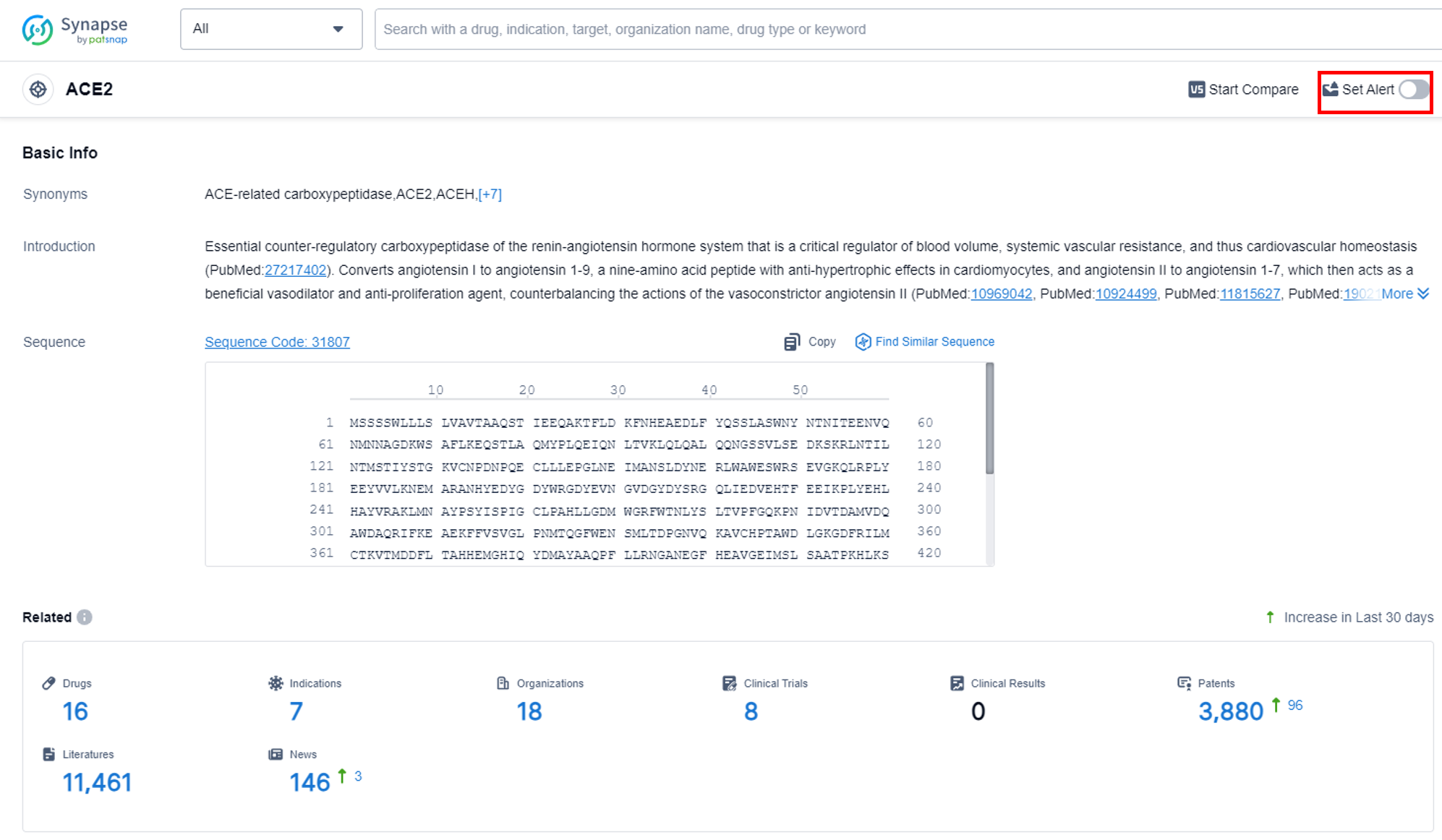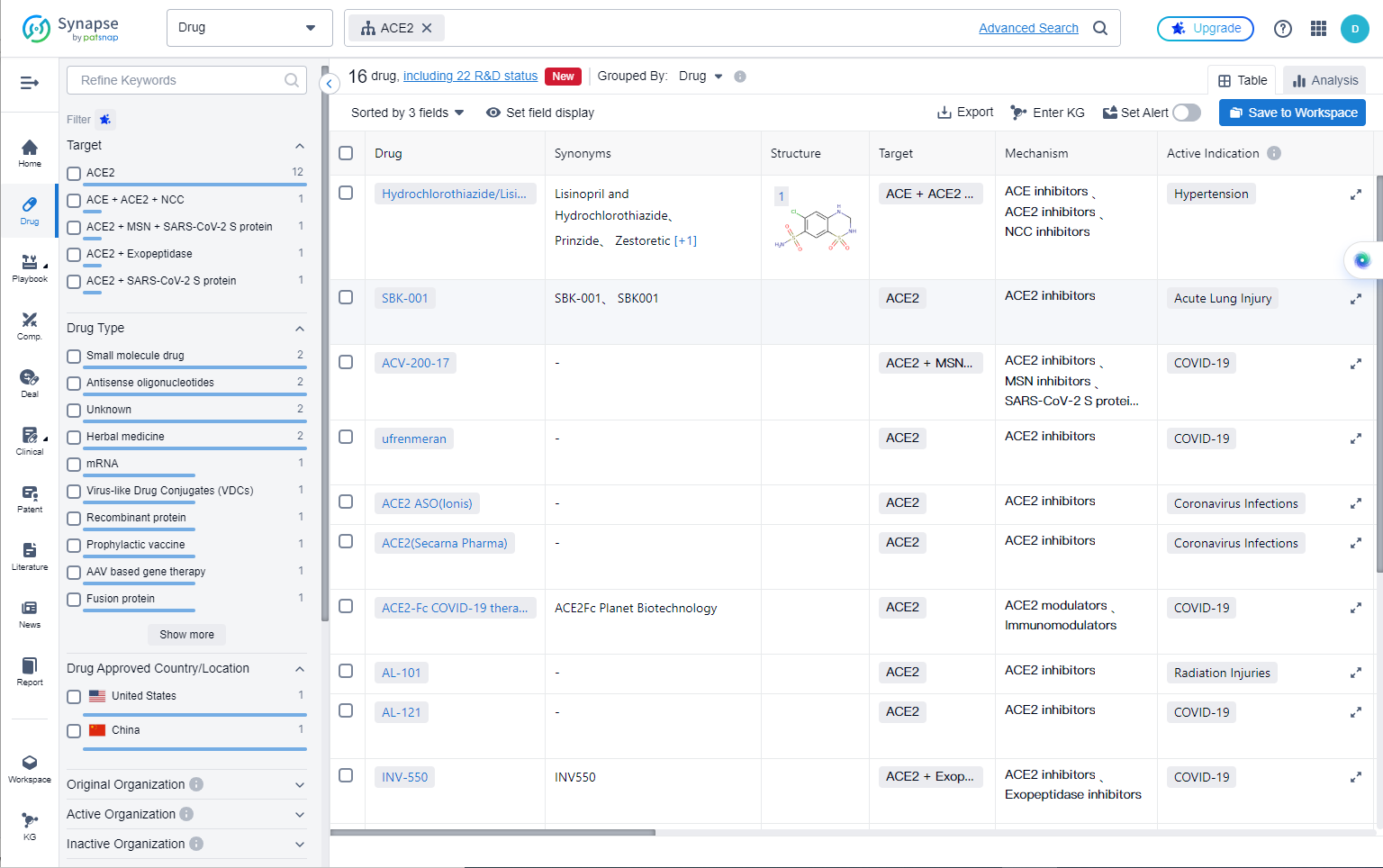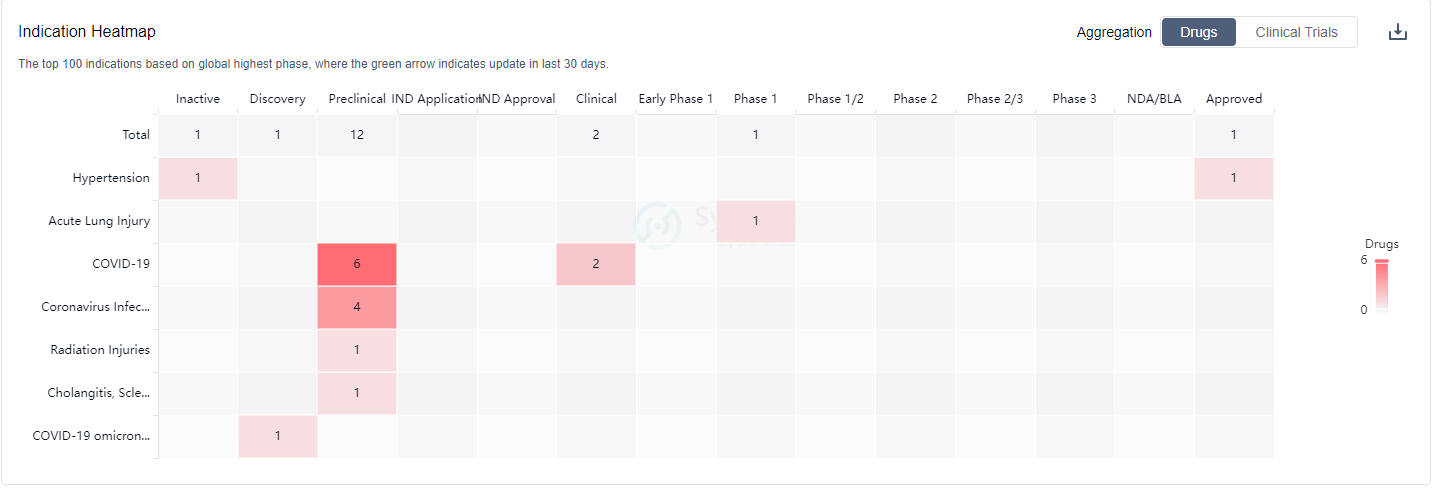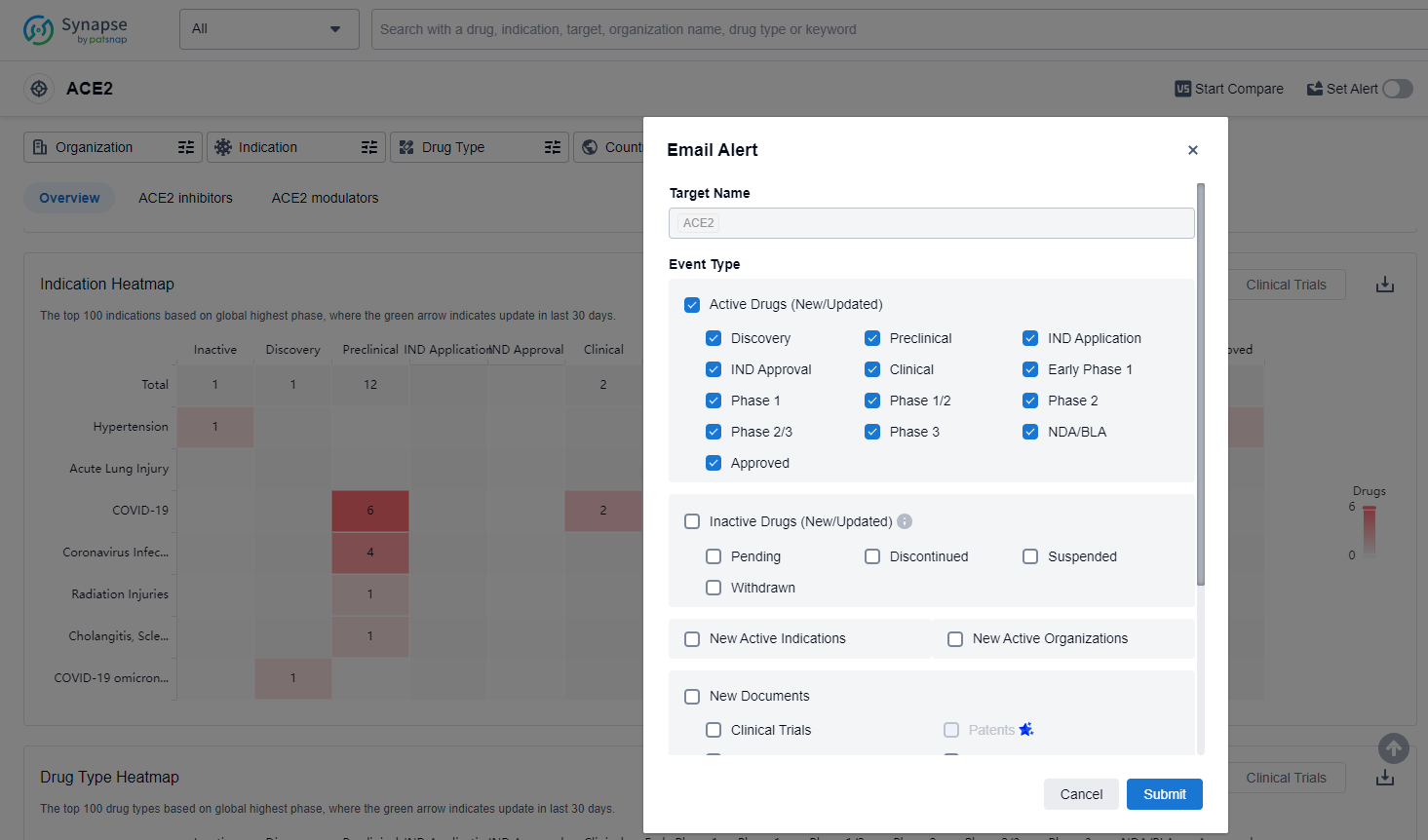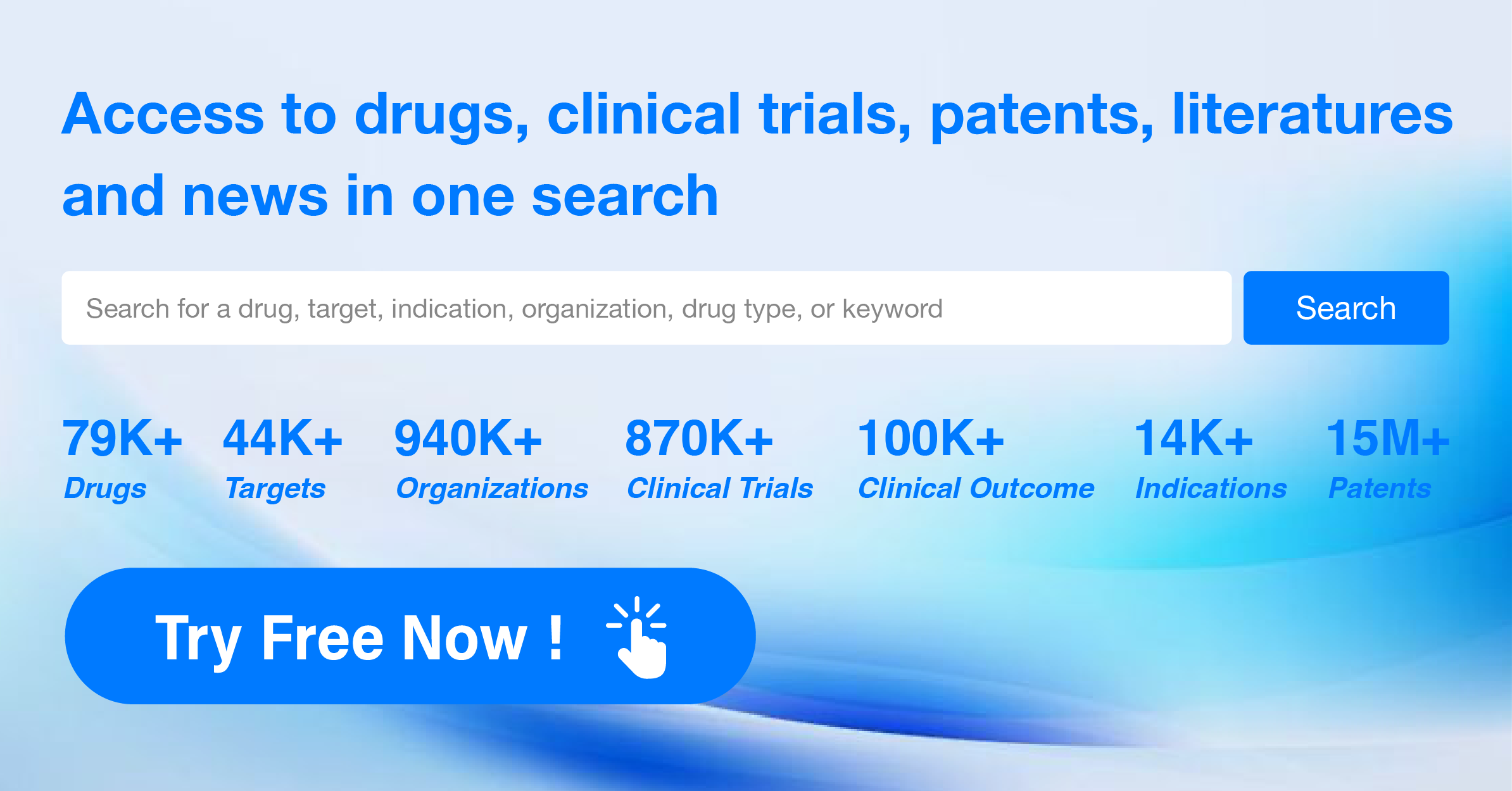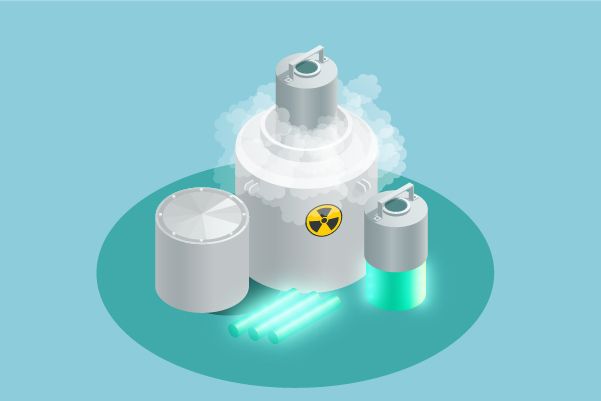What are ACE2 inhibitor and how do you quickly get the latest development progress?
ACE2, or angiotensin-converting enzyme 2, is a crucial enzyme found in the human body. It plays a significant role in regulating the renin-angiotensin system, which controls blood pressure and fluid balance. ACE2 acts as a receptor for the entry of the severe acute respiratory syndrome coronavirus 2 (SARS-CoV-2), the virus responsible for the COVID-19 pandemic. By binding to ACE2, the virus gains entry into human cells, particularly in the respiratory system. Understanding the role of ACE2 is vital for developing therapeutic interventions and vaccines to combat COVID-19 and other related diseases.
Angiotensin converting enzyme (ACE2) is a homologue of carboxypeptidase ACE, which produces angiotensin II, the main active peptide of the renin-angiotensin system (RAS). After the cloning of ACE2 in 2000, three main functions of ACE2 have been described to date. ACE2 is a powerful negative regulator of RAS, which can balance various functions of ACE. By targeting angiotensin II, ACE2 shows a protective effect in the cardiovascular system and many other organs. ACE2 has been identified as the main binding receptor for both SARS coronavirus and the new coronavirus from Wuhan. In SARS, the downregulation of ACE2 plays an important role in the pathogenesis of severe lung failure after viral infection. ACE2 and its homologue Collectrin can bind to amino acid transporters and play an important role in the absorption of amino acids in the kidneys and intestines.
How do they work?
ACE2 inhibitors are a type of medication that work by blocking the activity of the enzyme ACE2 (angiotensin-converting enzyme 2). ACE2 is an important enzyme involved in the regulation of the renin-angiotensin-aldosterone system (RAAS), which plays a role in blood pressure regulation and fluid balance in the body.
From a biomedical perspective, ACE2 inhibitors are primarily used in the treatment of cardiovascular conditions such as hypertension (high blood pressure) and heart failure. By inhibiting ACE2, these medications can help to reduce the production of angiotensin II, a hormone that constricts blood vessels and increases blood pressure. This can lead to a decrease in blood pressure and improved heart function.
In addition to their cardiovascular effects, ACE2 inhibitors have gained significant attention in the context of viral infections, particularly during the COVID-19 pandemic. ACE2 is the receptor that the SARS-CoV-2 virus (which causes COVID-19) uses to enter human cells. Some studies have suggested that ACE2 inhibitors may have a potential role in preventing or reducing viral entry into cells, although further research is needed to fully understand their efficacy and safety in this context.
List of ACE2 Inhibitors
The currently marketed ACE2 inhibitors include:
- Hydrochlorothiazide/Lisinopril
- SBK-001
- ACV-200-17
- ufrenmeran
- ACE2 ASO(Ionis)
- ACE2(Secarna Pharma)
- AL-101
- AL-121
- INV-550
For more information, please click on the image below.
What are ACE2 inhibitors used for?
ACE2 inhibitors are used to treat cardiovascular diseases, particularly hypertension. By targeting ACE2, these inhibitors aim to potentially prevent the SARS-CoV-2 virus from entering human cells and reduce COVID-19 symptoms and complications. For more information, please click on the image below to log in and search.
How to obtain the latest development progress of ACE2 inhibitors?
In the Synapse database, you can keep abreast of the latest research and development advances of ACE2 inhibitors anywhere and anytime, daily or weekly, through the "Set Alert" function. Click on the image below to embark on a brand new journey of drug discovery!
